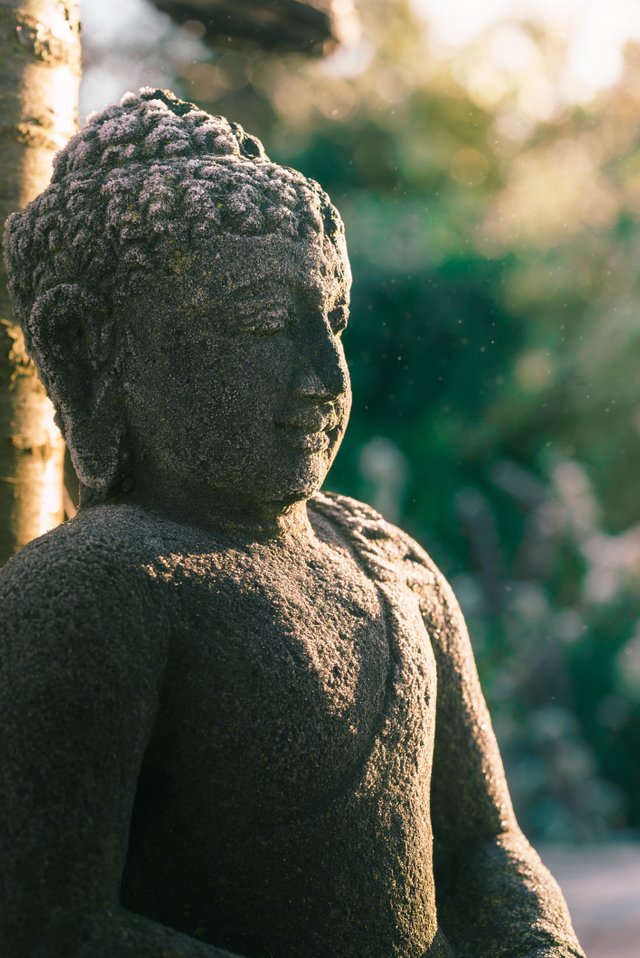How Better Breathing can get you more Aroused and Attentive

Image by Andreas Dress, via Unsplash.
New Science behind Ancient Techniques
Since ancient times many people have found considerable benefits from meditation, while either passively experiencing or actively controlling their breathing. However, only recently has it become possible to probe the biochemical and physiological mechanisms that underlie the reported benefits. Modern scientific approaches --and healthy skepticism-- do have benefits because, for one thing, not all ancient practices are well founded.
The scientific journal Psychophysiology recently published the findings from an interesting study of how our bodies regulate breathing, mindfulness, and overall activity levels. The research article has the rather technical title: Coupling of respiration and attention via the locus coeruleus: Effects of meditation and pranayama, and requires a subscription. But, this press release, The Yogi masters were right -- meditation and breathing exercises can sharpen your mind gives a nice summary.

This image of a human brain illustrates the location of the Locus Coeruleus, a region that regulates our breathing and the overall level of brain activity, through the hormone norepinephrine. Image by Diego69, distributed according to the GNU Free Documentation License
Here I’ll introduce the findings briefly and relate them to my own positive experiences with meditation as well as some other interested possibilities.
Neurophysiological links
The researchers at Trinity College Dublin’s Institute of Neuroscience and the Global Brain Health measured the response of test subjects while they performed mentally demanding tasks. They measured their breathing patterns, reaction times, and brain activity using functional MRI. The subjects who performed better had patterns of breathing better synced with their attention. They also found that production of the key hormone norepinephrine varied in sync with breathing, increasing while inhaling and decreasing while exhaling. This hormone is key for regulating our overall physical activity as well as our cognitive performance.
How can this help you?
There are two typical styles of breathing-focused mediation. Beginners often learn Quiescent meditation by concentrating on simply following and paying attention to the rhythm of their breathing, while trying to banish all other thoughts. This is how I started, early last year. I now meditate every morning. It really helps me stay calm, focused, and productive! There are also various other forms of Kinetic meditation, some of which involve carefully controlled breathing. The results of this study suggest the following:
To sharpen your focus
Meditation by focusing one’s concentration on breathing may enhance one’s ability to focus and Mindfulness.
For better Arousal –not just the sexual kind!
Meditation or other controlled breathing exercises may enhance one’s level of arousal. That is, it is likely to keep arousal levels more even, and thereby help with both drowsiness and panic attacks.
An independent study published last year by researchers from the Max Planck Institute for Human Cognitive and Brain Sciences found that meditation changes brain structure as well as cognitive performance. Specifically, the first type of mediation, focusing attention on breathing, improved performance at tasks measuring “executive aspects of attention”, in other words the kind of attention involved in actually getting things done.
It’s been known for over ten years that long-term meditation reduces the typical brain shrinkage and loss of cognitive abilities with age. See, for example, this study from 2005 and this follow-up study from 2011. Furthermore, a 2016 study found that, compared the brains of typical (non-meditating) subjects, the brains of long-term meditators where physically younger, by a lot. The brains of 50 year old meditators appeared on average 7.5 years younger!
So, modern science is revealing the mechanisms behind these ancient practices that have helped humans for millennia.
Just don’t tell any zombies about this, OK?

Unlike the breathing mediation practices discussed here, the practice of Shava sadhana is a good reminder that not all ancient practices are supported by modern science. This image of the goddess Kali, illustrates how she gave a divine vision to a poet who practiced this form of meditation atop a human corpse. Fortunately, the benefits of breathing meditation can be had without spending time literally over anyone else’s dead body.
S. Lan Smith
Kamakura, Japan
May 14, 2018
Thanks to all those who made their artwork freely available for use herein.